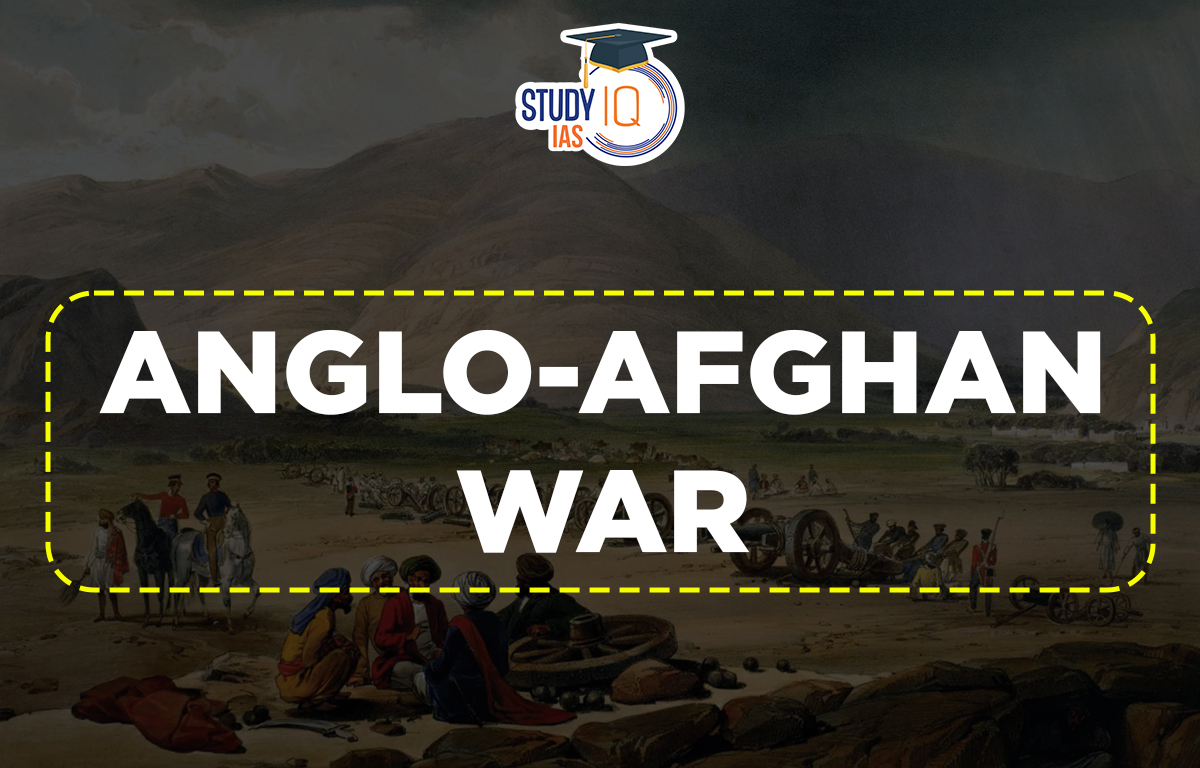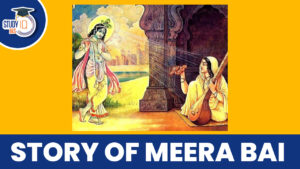Table of Contents
Anglo-Afghan War
Read all about Anglo-Afghan War. Before its relations with the Afghan government were settled, the British Indian Government fought two wars with Afghanistan. In terms of geography, Afghanistan was positioned strategically from the British perspective. It might act as a fortified base outside of India’s borders to monitor any potential military threat from Russia and to boost British commercial interests in Central Asia. It might serve as a useful buffer between the two adversarial powers (Russia and Britain).
In this article student preparing for UPSC will find all the details related to Anglo-Afghan War for the preparations of UPSC Examinations.
Read about: Carnatic War
First Anglo-Afghan War (1839-1842)
Auckland made the decision to install a British-friendly monarch in Dost Muhammad’s place after he moved his attention to Russia (Shah Shuja). After being removed from the Afghan throne in 1809, Shah Shuja has been living in Ludhiana as a British pensioner ever since. He was restored to the Afghan monarchy by the British.
On June 26, 1838, in Lahore, a pact was signed between Shah Shuja, Maharaja Ranjit Singh, and the Punjabi government. According to which, in exchange for Shah Shuja’s vow not to engage in negotiations with any other state without the approval of the British and the Punjab Governments, Maharaja Ranjit Singh and the British promised to assist Shah Shuja in seizing power in Afghanistan.
Read about: Anglo-Maratha War
Second Anglo-Afghan War (1870-80)
Imperialism worldwide experienced a revival starting around 1870. Also heated up was the rivalry between England and Russia. Once more, the British rulers considered taking direct governmental control of Afghanistan to use it as a basis for their push into Central Asia. In 1878, a new assault on Afghanistan was launched in an effort to compel Sher Ali, the Afghan monarch, to accept British terms. The Second Afghan War is referred to as this.
Read about: Anglo-Mysore War
Second Anglo-Afghan Course of War
Sher Ali was presented with a favourable treaty by Lord Lytton, but the Amir opted to maintain a friendly distance from both of his strong neighbours, British India and Russia. Despite having earlier given a similar concession to the Russians, Sher Ali later refused to keep a British representative in Kabul. Lytton made the decision to attack Afghanistan after the Russians removed their envoy from Kabul. Sher Ali withdrew in the face of the British assault, and Yakub Khan, Sher Ali’s eldest son, and others signed the Treaty of Gandamak (May 1879).
Read about: Battle of Buxar
Anglo-Afghan War Treaty
A new era of Anglo-Afghan friendship began in 1855 when Dost Mohammed and the Government of India signed a treaty of friendship. The two governments committed to maintaining cordial and peaceful relations, respecting one another’s territories, and refraining from meddling in one another’s domestic issues.
Mohammed further acknowledged that he would “be the friend of the allies of the East India Company and the adversary of the opponents of the East India Company.” He upheld the terms of the agreement and declined to aid the insurgents during the Revolt of 1857.
Read about: Battle of Plassey
Treaty of Lahore
The tenet “enemy’s enemy is a friend” served as the foundation for this Anglo-Sikh alliance. It was feared that a force led by Napoleon and Zamanshah would attack France. In this agreement, the British and the Sikhs agreed not to defend one another’s adversaries and not to meddle in one another’s internal affairs. This relationship persisted following Ranjit Singh’s passing in 1839.
The problem for Lord Auckland was that he couldn’t support Dost Mohammad Khan’s friendship at Ranjit Singh’s expense. He, therefore, had two options. One choice was to halt all preparations for Afghanistan. Another choice was to invade Afghanistan, remove Dost Mohammad Khan, and install a puppet administration to keep the Russians and Persians away.
Read More: Anglo-Burmese War
Anglo-Afghan War Outcomes
On August 7, 1839, Dost Mohammed Khan submitted to the British after a little struggle, and Shuja was put back on the throne. Dost Mohammad Khan was sent to Calcutta as a prisoner. Shah Shuja, however, was a traitor. Shah Shuja was seen as a traitor by the Afghan people, and they were unable to accept him as their leader. So, on April 5, 1842, Shuja ud-Daula, in command of the Afghan away, condemned Shah Shuja to hell.
The assassination of Shah Shuja also broke the first amazing British Success bubble. The British Political Agents were hacked to pieces as a result of the Afghanis’ uprising and rage. Injurious colds claimed the lives of numerous British soldiers. The result of this battle was that the British were compelled to accept a humiliating treaty and recognize Dost Mohammad as the Emir of Afghanistan.
Therefore, Lord Auckland’s stupefied plan for the First Anglo-Afghan War, which resulted in the deaths of thousands of British (Indian) soldiers and the loss of billions of rupees, was responsible for the conflict. Alexander Burns, Charles Burns, Sir William Macnaughten, and General Elphinstone were the English commanders who were killed during this time.
Because of criticism of Lord Auckland’s Afghan Policy, Lord Ellenborough took his post in 1842. Because Lord Ellenborough loved military showmanship, he destroyed Kabul and left Afghanistan in order to exact revenge. Dost Mohammad’s son Mohammad Akbar gained local power.
Read More: Anglo-Nepalese War
Anglo-Afghan War UPSC
Before normalising ties with the Afghan government, the British Indian Government fought two wars with Afghanistan. The competition between England and Russia became closely related to Indo-Afghan ties during the nineteenth century. Russia was rising in Central Asia and attempting to expand its territorial control into West and East Asia, while Britain was increasing its colonial influence in West, South, and East Asia. Read all Anglo-Afghan War in this article for UPSC Exam Preparations.


 Battle of Plassey, History, Causes, Impa...
Battle of Plassey, History, Causes, Impa...
 Story of Meera Bai and Her Devotion For ...
Story of Meera Bai and Her Devotion For ...
 Desert Climate, Distribution, Climatic C...
Desert Climate, Distribution, Climatic C...





















